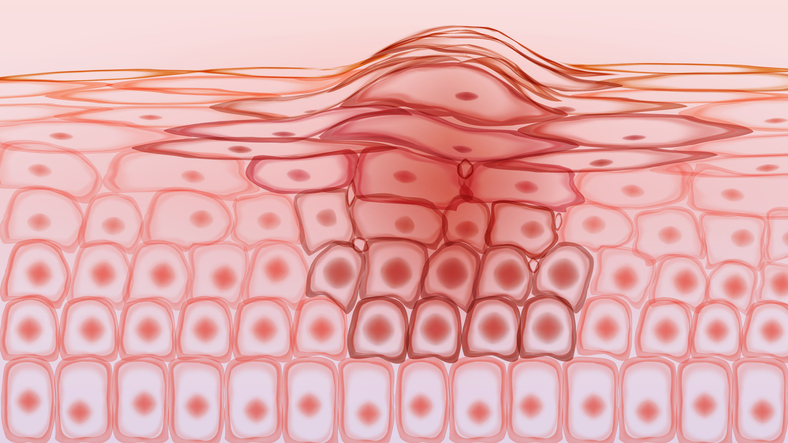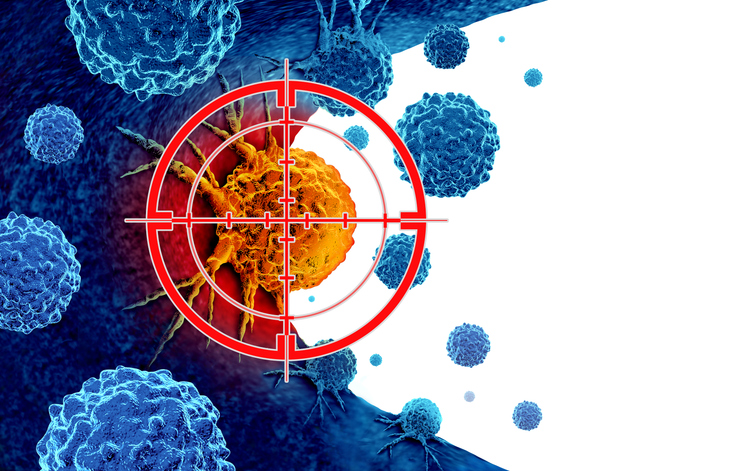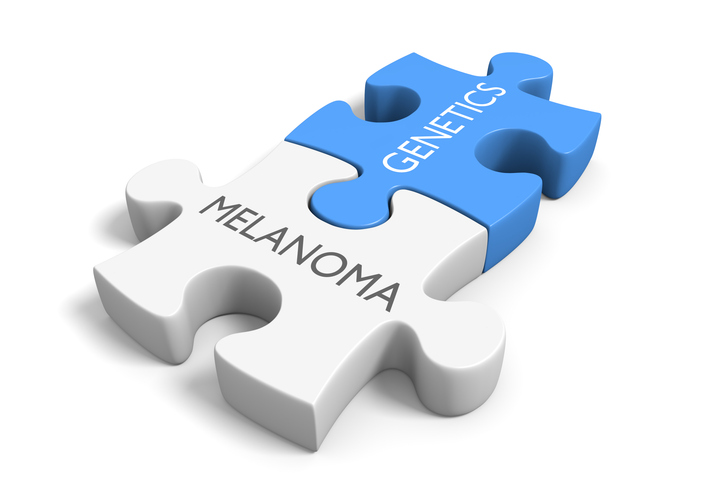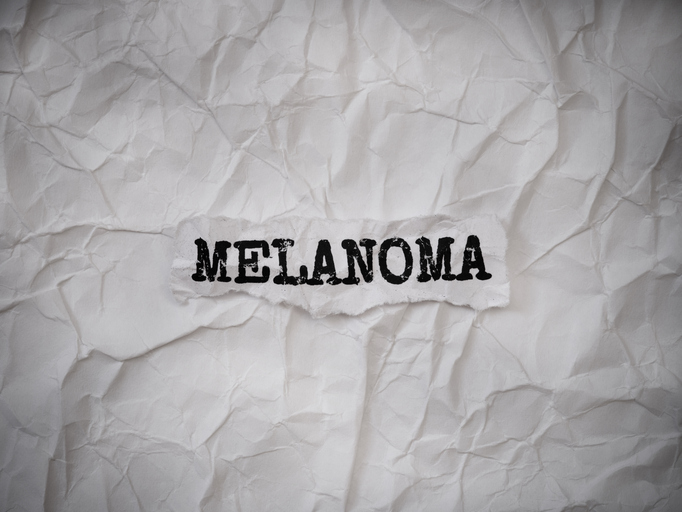Advancing Therapies Have Improved the Prognosis of Metastatic Melanoma
By Dr. John Fruehauf, Evolent - Last Updated: March 13, 2025Recent advancements in the melanoma treatment paradigm have drastically improved outcomes and changed the diagnosis of metastatic melanoma from a horrible prognosis to a potentially curable one. DocWire News spoke to John Fruehauf, MD, field medical director at Evolent, about how new therapies have improved the landscape of metastatic melanoma care.
DocWire News: How has the prognosis for metastatic melanoma changed over the years? Is this disease now potentially curable?
Dr. John Fruehauf: Yes, I think that the biggest improvement in survival in cancer through new treatments is melanoma. Melanoma is the one disease that we have had a huge breakthrough in survival. If I had seen a patient 15 years ago in my clinic, they’d have stage four melanoma. I would be telling them we don’t have any therapy, that we have a statistically significant improvement in survival that we can give you, but we can give you treatment to help your symptoms and make you more comfortable. However, for stage four melanoma, the average survival was from 10 to 12 months. It was a dismal scenario, but there were glimmers of possibility for advance based on Steve Rosenberg’s work at the National Cancer Institute. He was chief of the surgery branch while I was there doing my fellowship. And in fact, he’s only recently retired, but he is still very active and involved in immunotherapy for melanoma.
He pioneered the use of interleukin-2, which is a signaling molecule that our own body makes. When confronted with foreign invaders, the helper T-cells work with the macrophage to set up a signaling circuit to the killer T-cells. One of the key signaling molecules is interleukin-2, which can activate the killer T-cell to kill the cancer cell. So, you could have T-cells on top of the cancer cell, and they want to kill that cell but need the interleukin-2 signal. It’s a required signal to get them to release their bombs, granzyme B and porphyrin that can kill the cancer cells. And so he started this investigation into interleukin-2 in the eighties, and it was shown that it could be effective, but only 10% of patients had durable remission. So 10% could be potentially cured, but that’s too small to achieve clinically significant changes in overall survival.
And then, trials looked at adding chemotherapy to the interleukin-2, and I did that for many years. It was called biochemotherapy, and it did have a 50% response rate. So, 50% of the patient’s tumors would shrink by at least 30%. But in the end, this overall survival was not statistically better, and it was a very tough treatment. You had to spend four days inpatient at the hospital, feel terrible for another week, and then come back in three weeks to get to therapy again. So, it dominated their lives. Their lives revolved around this treatment, which wasn’t statistically significantly better but did have improvements in quality of life in terms of tumor shrinkage and decreased symptoms. No chemotherapy has ever been found to change the natural history of melanoma, and this is thought to be because melanoma cells are like stem cells.
A stem cell is a self-regenerating cell, and in our bone marrow, we have stem cells that make our white blood cells, red blood cells, and all our different circulating blood cells. And when we do chemotherapy, the stem cell pool survives the chemotherapy. The chemotherapy can kill the cells that are no longer stem cells and are circulating. The white blood cell count goes down, but within three weeks, the stem cells have repopulated the white blood cells, and the person is safe from infection. That’s one of the reasons we give chemotherapy every three weeks, because that’s how long it takes the stem cells to recover, to refurbish the cells circulating in the blood to keep us safe from infection. So you can imagine that if cancer cells have the same qualities as bone marrow stem cells and are resistant to chemotherapy, both cell types become resistant.
Cancer cannot be cured if it’s a stem cell type cancer with chemotherapy because you’d have to give so much; you would be killing the stem cells in the bone marrow, which you need to recover your normal cells. It was important to find a new way forward, and the breakthrough by Honjo in Japan discovered the sword that sticks out of the cancer cell and kills the T-cell on its surface. That sword was a Nobel Prize-winning discovery. And then, nivolumab and Keytruda were developed as drugs. When the sword is coming in to attach to the receptor, the antibody stops the sword from killing the T-cell. So it’s like a shield protecting the T-cell, and now the T-cell can release its bombs and kill the cancer cell.
So that was the huge breakthrough. In addition, as we talk about interleukin-2, the first immunotherapy drug to be approved was the CTLA-4 antibody, and that’s over with the macrophage and the helper cells working together to send the interleukin-2 signal to the killer cell. When they’re working together, an off switch turns on, and now they aren’t engaged, and the interleukin-2 goes away. So now you aren’t sending that signal to the killer cell. So, the CTLA-4 antibody stops that off switch.
Now, the two cells work together and send interleukin-2 all the time to activate the killer T-cell. And so that was the first treatment to improve survival ever for melanoma. CTLA-4 antibody, Yervoy, or Ipilimumab. Bristol-Myers Squibb developed Nivolumab, which protects the killer T-cell from the sword and gives the Yervoy, which keeps the interleukin-2 going. And that combination of immunotherapy led to this dramatic improvement in survival. The 10-year overall survival data were published in the New England Journal of Medicine on January 2nd, 2025. And what that showed was that the melanoma-specific survival at 10 years was 52%.
And so that means that we’ve gone from a survival of 10 months to 50% of people being alive at 10 years. So, this is the biggest tectonic plate shifting result for developing therapy for melanoma. Now, we understand the individual patient’s tumor and individual patient’s biology. Why are some people cured and other people aren’t? A lot of work is being done to determine the molecular elements of the immune system’s interaction with the tumor. We can predict who will most benefit from the immunotherapy based on specific biomarkers and blood tests. BRAF targeting therapy was the other class of therapy that was developed. Genentech developed vemurafenib, which emerged just after Yervoy. Now, here’s a targeting drug that binds to the BRAF, which is a circuit in the cell. So, there are receptors. You get a signal that goes into the cell, and different pieces are activated in a circuit.
BRAF is the second piece of a circuit that responds to these signals. And the signal goes away; the BRAF turns off. But in about 50% of melanoma patients, this BRAF is mutated, and it’s always on. It doesn’t matter what’s going on up above; it’s just sending a signal for growth. And so that’s a carcinogenic process, oncogenic in melanoma that has this BRAF mutation. And it turned out that most melanomas with that mutation are addicted to that signal. They need that signal to survive. When vemurafenib was given 50, 60% of the patients responded to the treatment, and survival improved from the 10 to 12 months we talked about to about 14 months. But it only worked for a while and then would wear off. Why does it wear off?
And so there’s the BRAF is signaling to this MEK, and the MEK is signaling downstream. In addition to BRAF, there’s CRAF, which could go around the BRAF inhibition and turn on MEK, and MEK would keep the cell alive. So they added to the BRAF inhibitor, they added a MEK inhibitor, and GlaxoSmithKline first developed that. Dabrafenib is the BRAF inhibitor, and trametinib is the MEK inhibitor. And now people were living much longer. I’ve had some of my patients were cured by taking these pills, although the cure rate is lower than with immunotherapy. So immunotherapy is the primary treatment strategy, but if you fail, you can get BRAF and MEK treatment if you have a BRAF mutation. So you can have a sequence of therapies. And then there’s another element of the treatment for melanoma is anti-angiogenesis therapy, which kills the blood vessels that feed the tumor.
So, the tumors require a blood supply to continue getting bigger and bigger. And there’s one drug called Lenvima, which we use in kidney cancer. It was also found to have benefits for melanoma. It could also be given with Keytruda, the PD-1 inhibitor that works through the immune system. And now we’re seeing that in kidney cancer, Lenvima-Keytruda is a good combination as it is in melanoma. One of the great things is we have this breakthrough with the combination of nivolumab and Yervoy. Then we have newer ones, which are LAG inhibitors, and Opdualag, which is a combination of nivolumab and an LAG antibody. The recent study presented at ASCO combined Yervoy, the LAG antibody, and the PDL-1 antibody nivolumab. Those three together were found to be safe and effective, with a long period of survival at about 70% in two years.
They’ve combined Yervoy, low dose Yervoy, with Keytruda, which also has about a 75% two-year survival. One of the keys is that we have these tools in the box; how do we know which person gets which tool? What’s the best tool for the individual? That’s where the biomarker testing comes in, which, for all of my patients, are blood biopsies, gene sequencing, and measuring how many swords are present in the cancer. We can look at a tissue section from the melanoma and see, oh, this has many swords on it; that patient is very likely to respond to an immunotherapy drug.
And when you give two immunotherapy drugs at the same time, there’s much more toxicity. So, if we can analyze the tumor and the gene sequencing of the circulating tumor DNA, we can refine our treatment choices, such as high PDL-1 or lots of mutations in the tumor. We don’t need to use both immunotherapy drugs or three immunotherapy drugs. One is enough; you get the same benefit with much less toxicity. So now we’re on how to refine the application of these drugs by directing the right treatment strategy to the right person’s genetic… The tumor makeup and the genetics of the tumor are helping us to figure out how to approach that individual patient.







 © 2025 Mashup Media, LLC, a Formedics Property. All Rights Reserved.
© 2025 Mashup Media, LLC, a Formedics Property. All Rights Reserved.